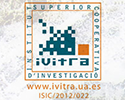Isidore of Pelusium and the use of the Holy Bible in his epistles
Eirini ARTEMI
Original title: Isidore of Pelusium and the use of the Holy Bible in his epistles
Published in
Keywords: Apostles, Christ, Isidore the Pelousiotes, New Testament, Old Testament, One God in Three Persons, Scriptures.
St. Isidore the Pelousiotes studied the Bible carefully. Through his letters, he interpreted various biblical passages and he explained different biblical themes. The word of the Bible was for the Father an infallible guide to overcome the pitfall of every heretical teaching, which threatened the salvation of believers in Christ. At the same time according to the inspired work of the Bible he could proclaim that there is One God in Three Persons. He emphasized the unity of God's essence and at the same time he talked about the hypostases of the one God. Isidore knew, of course, that the human mind cannot grasp the incomprehensible wisdom, that God's wisdom, since that God overlies the limits of the human mind. Finally with the help of hagiographical passages he could comprehensively cover the letters of issues other than doctrinal, moral, ascetic, educational and interpretive. In the Scriptures, he supported that the believer finds in Christ supplies to strive for social and moral progress, but mainly in order to conquer spiritual godly progression and perfection. The profound study of the Scriptures provides to the human being the ability to keep alive the flame of faith. It is a safe guide for the course of the life in Christ according to what the Triune God revealed in the Old Testament, the incarnated Word taught in the New Testament and the Apostles preached. Through Isidore's letters, it seems the respect which nourishes the holy father for Old and New Testament. For him, both testaments have the same worth as sources the Bible. They proclaim strongly and unambiguously the existence of one and at the same time Triune God. Simultaneously he ridiculed those heretics like Marcion who distorted the truth and became enemies to the Testaments.
The Virgin Mary, Theotokos, and Christ, true God and true man. The mystery of Incarnation according to Cyril of Alexandria
Eirini ARTEMI
Published in Mulier aut Femina. Idealism or reality of women in the Middle Ages
Keywords: Christ, Christotokos, Cyril of Alexandria, Nestorius, Theotokos, Virgin Mary.
The 5th century controversy of Bishop Nestorius of Constantinople and Bishop Cyril of Alexandria centred on the Person of Jesus Christ: To what extent is Jesus human? To what extent divine? And to what extent and how are His humanity and divinity united? Christ has two natures. Jesus Christ is both fully human and fully divine. If Jesus was only human, Cyril urged, and God was elsewhere, the Incarnation, the Word became flesh (human indeed), would be meaningless. On the other hand Nestorius refused that Jesus is a God too, when he questioned the use of Τheotokos (Θεοτόκος) in the veneration of Mary, the mother of Jesus. This led to a greater dispute about his Christology, specifically, his conception of the unity of the divine and human natures of Christ. In this controversy Cyril of Alexandria became his most outspoken opponent. Cyril underlined that Christ is human and God at the same time. He has two natures in the unity of person (Hypostasis). Cyril emphasized the unity of Christ and his divinity, he held that Christ “was at once God and man,” and without “any mixture or blending.” In this way he preserved the distinction between the two natures which became so important in the definition of Chalcedon. Cyril urged that Jesus Christ is at once God and man, and he is “in the likeness of men” since even though he is God he is “in the fashion of a man”. He is God in an appearance like ours, and the Lord in the form of a slave.
The rendering of Christ in the Temple icon of the Theotokos: a gaze from the fourth century. Part two
Elena ENE D-VASILESCU
Original title: The rendering of Christ in the Temple icon of the Theotokos: a gaze from the fourth century. Part two
Published in
Keywords: Christ, Egypt, Fourth century AD, Icon, Mary, Theotokos.
The second level of St. Bonaventure’s Transcendent Aesthetics: Speculating the divine Trinity through the good
José María SALVADOR-GONZÁLEZ
Published in Mirabilia Journal 31 (2020/2)
Keywords: Christ, Contemplation, Good, St. Bonaventure, Theology, Trinity.
After pointing out that St. Bonaventure of Bagnoregio conceives his Aesthetics as a free way to be able to ascend contemplatively towards God, this article seeks to explain the surprising and ingenious “arguments” (deeply imbued by faith) that this author proposes to base the second level of the “transcendent” stage of his peculiar Aesthetics. In the first four levels of his Aesthetics, Bonaventure establishes this initial ascent to God by considering the external beings of the material world as vestiges of the Creator (first and second levels), and then by examining our mind as an image of God, in which he can be seen reflected in a mirror (third and fourth levels). St. Bonaventure states that in the third stage of his Aesthetics (the "transcendent" stage), the human mind can look over itself to speculate on God in his essential property as the Supreme Being (fifth level) and in his personal properties as highest Good (sixth level). Our article focuses exclusively on the expression of this sixth level of Bonaventurian Aesthetics.






















































































